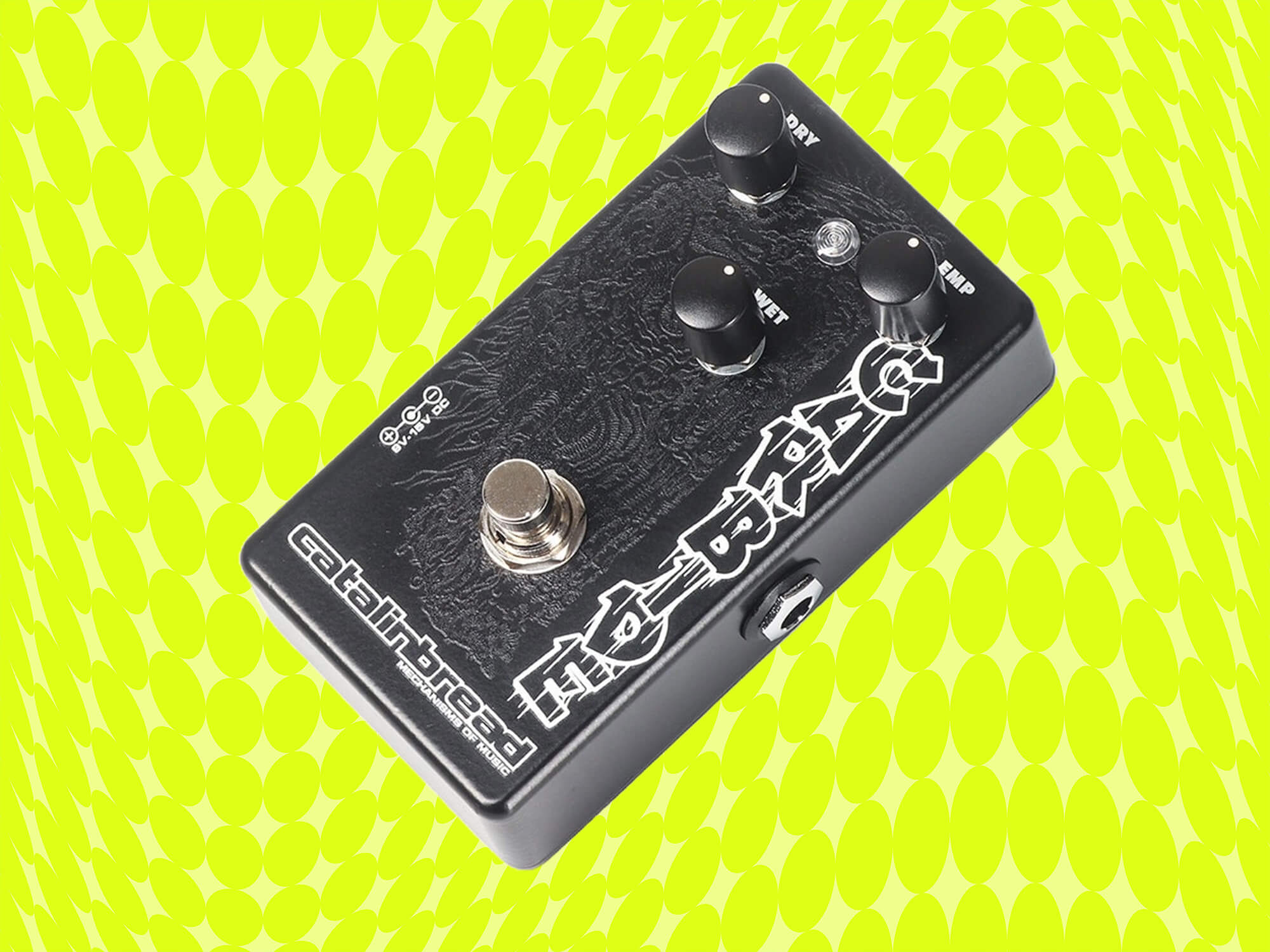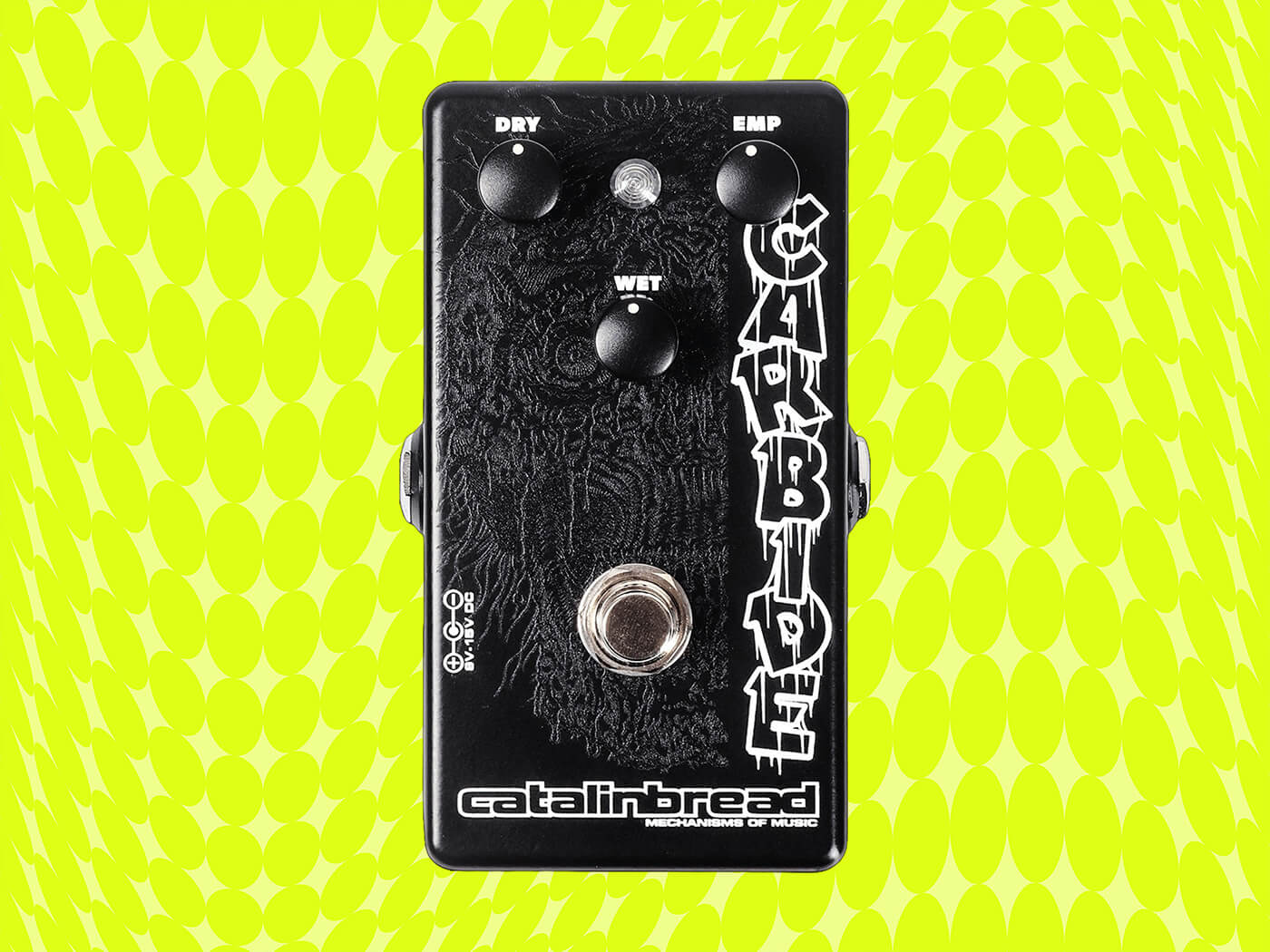Catalinbread Carbide review: a bold twist on a classic heavy metal machine
You don’t need to be a fan of Scandinavian doom rock to enjoy a bit of chainsaw distortion… but can this three-knob pedal give new flavour to an ancient Boss recipe?

Catalinbread Carbide
Review Overview
Our rating
8
Our verdict
The status LED on the Catalinbread Carbide is orange. Nice, eh? But if that doesn’t sound like the most brain-judderingly fascinating fact with which to begin a gear review, just bear in mind that the rest of the pedal is black… and when it comes to high-gain distortion, the combination of black and orange means we can only be in one place: Boss HM-2 country.
This is not, however, a mere clone of the classic noise box that launched a thousand metal bands – and nor is it a simple ‘refinement’ or ‘upgrade’ of the original circuit. The Carbide takes as its starting point the brutal chainsaw-like sound of an HM-2 with all four knobs cranked to full, 90s Swedish death metal style, and sets off in a new direction from there.
Now, the first thing you need to know about that new direction is that it will not take you to any of the sounds associated with the old Boss pedal being used ‘correctly’ – that is to say, with the tone knobs set anywhere around the middle. This is one chainsaw that does not have a hedge-trimmer setting. The gain is fixed, and there are no traditional EQ controls to help you tame the middly monstrousness.
What you do get is an intriguing trio of knobs: ‘emphasis’ for choosing just how much bass to tune out in the quest for midrange cut; ‘wet’ for setting the distortion circuit’s output level; and, in the most eyebrow-raising inclusion since Australia joined the Eurovision Song Contest, ‘dry’ for mixing in some clean tone.
For doing WHAT?! Well, yes, quite… but clean blending on an HM-2 type is hardly a new idea – see the Decibelics Angry Swede V2 and Electro-Harmonix Hell Melter – and in this case the dry knob also engages a boost that’s been tailored for downtuned guitars.

In Use
If you ever have turned all four knobs to maximum on an HM-2, you’ll recognise the sound of the Carbide in an instant. It’s so extreme it’s almost funny, with masses of gain and a tonality that’s not so much ‘stuck wah’ as ‘demonically possessed wah’. Best not get too ambitious with complex chords, but riffing in the sub-E zone sounds gloriously obnoxious and single notes higher up the neck bite through with smooth authority.
All this, by the way, is with dry output and emphasis both set to zero. Start turning up the latter and the low end thins out very quickly, replaced by even more raspily focused mids – it’s a useful and expertly tuned control, but you probably won’t want to push it too far, especially if your amp is anything less than a floor-shaking high-power stack.
That’s even more true of the dry output, which can sound downright silly if it’s set higher in the mix than the distortion. Use this as a background tool to add just a little clarity and definition, however – or to turn the Carbide into a booster and tone-shaper for an already distorted sound – and you may well be glad to have it at your service.
This pedal isn’t likely to change the world – it sets out to do something that only a limited number of players will find appealing, and makes no apologies for that. But it does that thing extremely well, and is a worthy addition to the black and orange canon.




